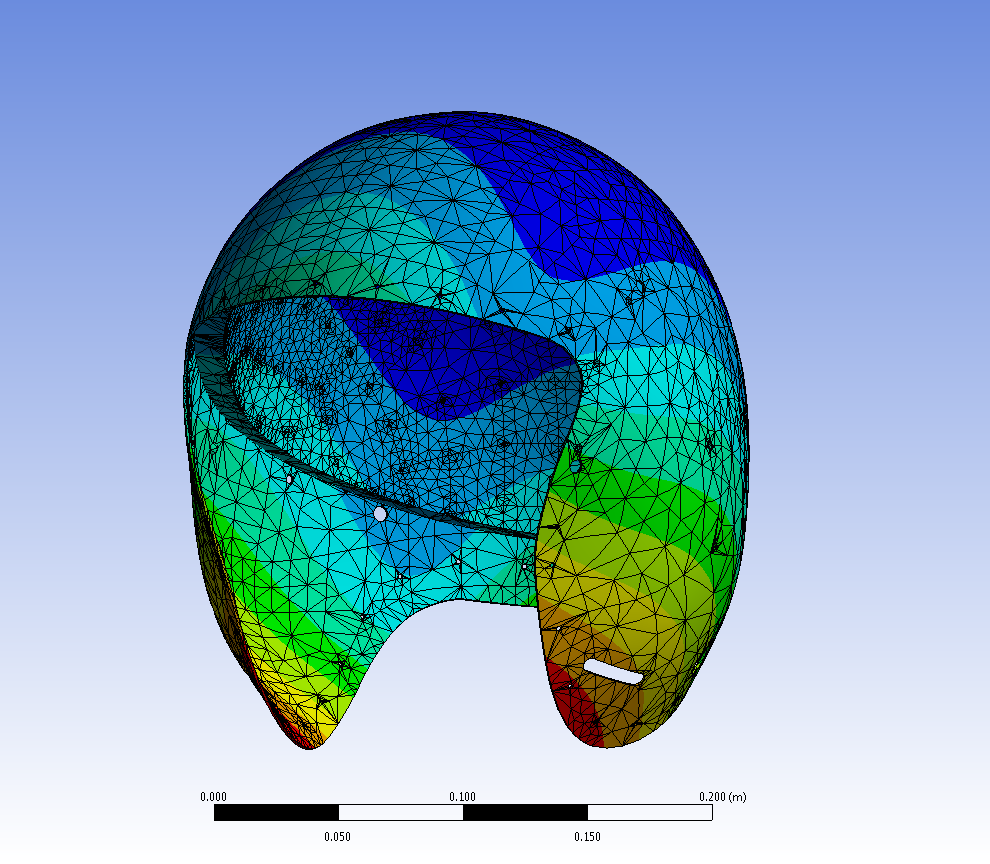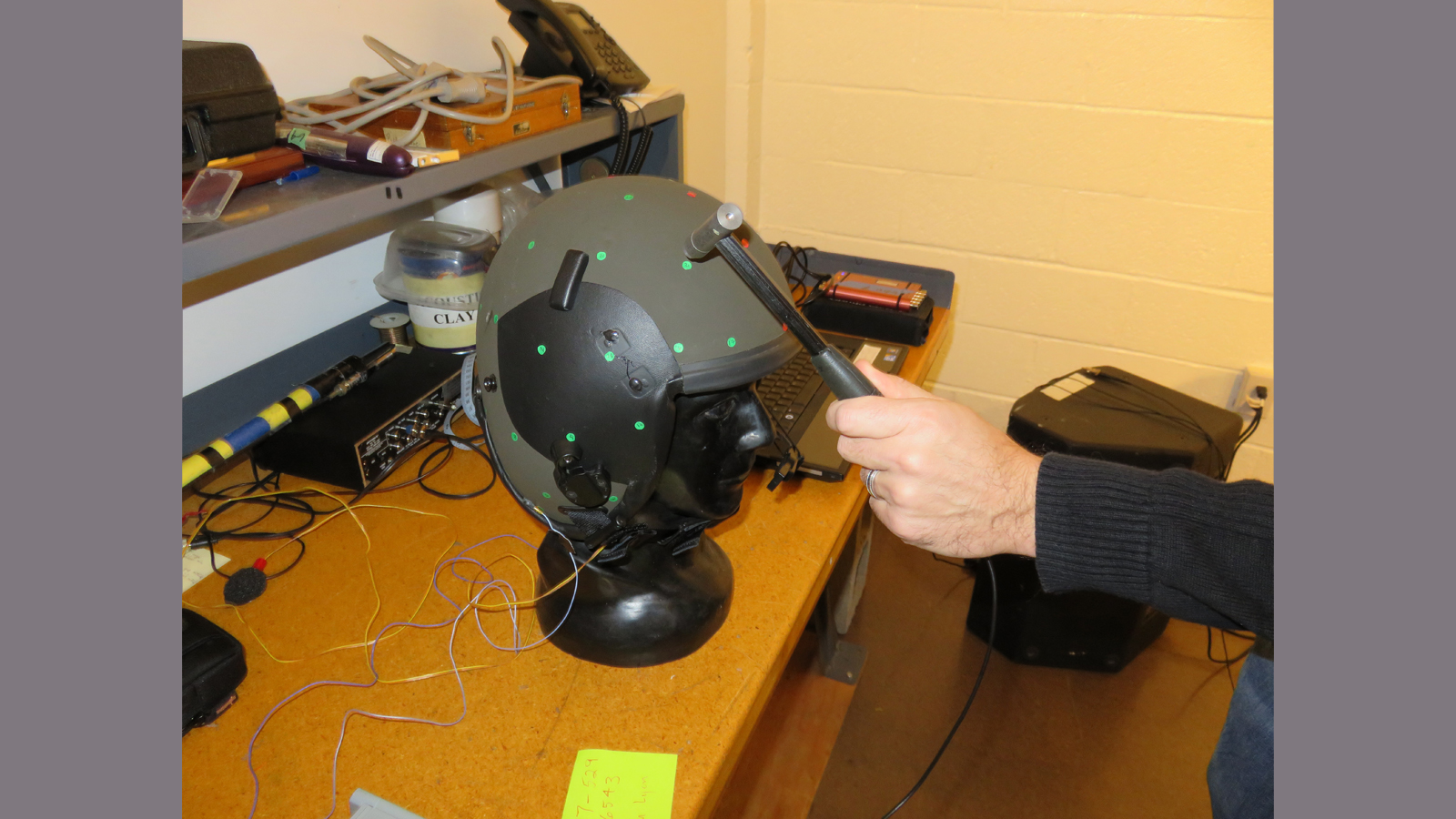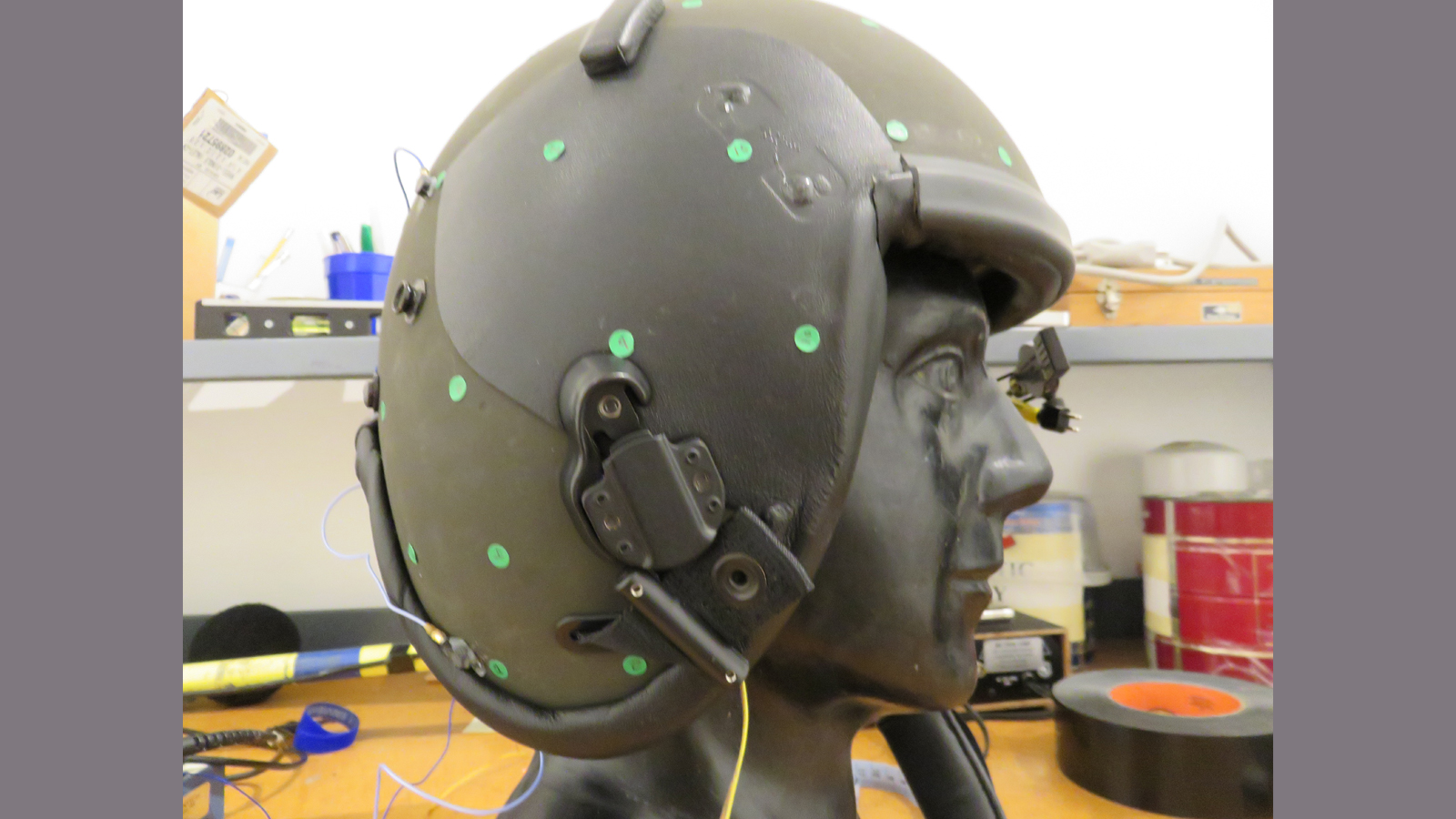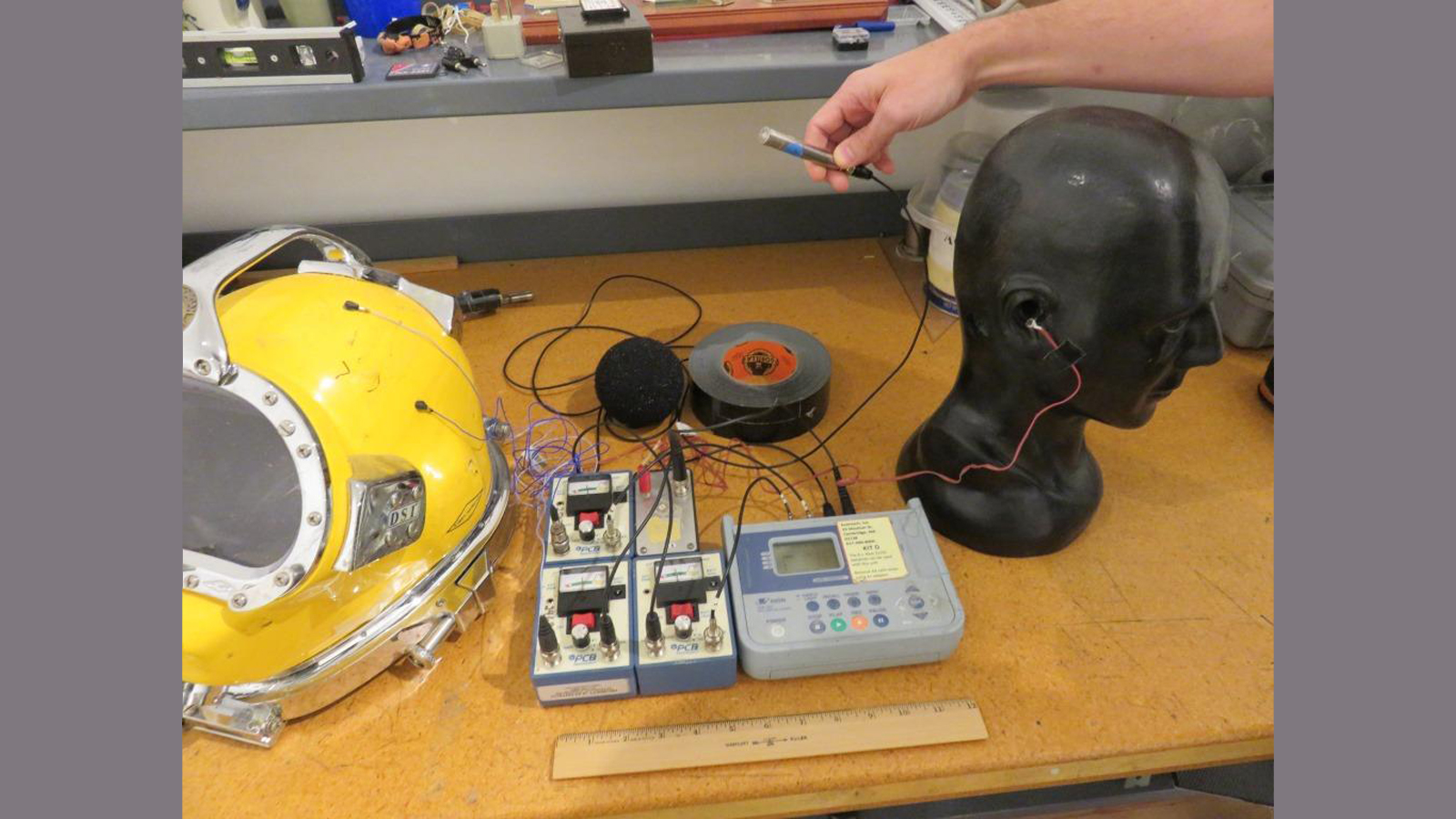U.S. Navy pilots have long expressed concerns about high noise levels in the Advanced Hawkeye E-2D aircraft.
This long-range propeller plane generates strong tones at the propeller blade passage frequency near 147 Hz, and lower order harmonics up to around 600 Hz. Overall A-weighted noise levels of up to 105 dBA in the cockpit have led to missed radio communication, excessive post flight fatigue, as well as hearing loss for extended flight missions. The current helmet worn by Navy pilots flying this aircraft provides minimal reductions of cockpit noise levels in the frequency region of these tones. The Navy hired Acentech to determine why this is the case, and to propose solutions to increase the helmet’s performance.
Acentech’s Phase I study developed a detailed, quantitative understanding of the dynamic response of the helmet, and how it may be limiting the performance of the helmet in the frequency range of the propeller tones. We employed a combination of finite element modeling and analysis, measuring acoustic and vibration responses on sample helmets. We concluded that vibration of the helmet “flaps” covering the ears is amplified by structural resonance above 100 Hz, leading to the poor sound attenuation in the frequency range of the louder propeller tones. The vibration of the flaps compresses the air contained within the ear cup cavity that is sealed against the head, creating the high noise levels experienced by the pilots.
One solution proposed by Acentech’s team involves connecting the flaps to the helmet “dome” through a flexible decoupling band so that vibration of the flaps is isolated from the dome, reducing the noise that the vibration generates in the ear cup cavity. The transmission of vibratory energy from the dome into the flaps is also reduced by the isolation provided by the decoupling band.



